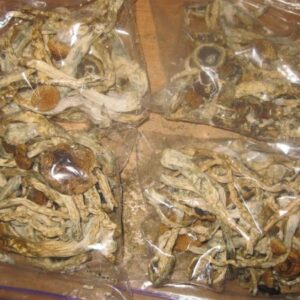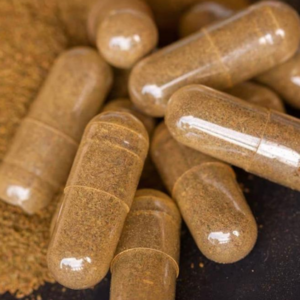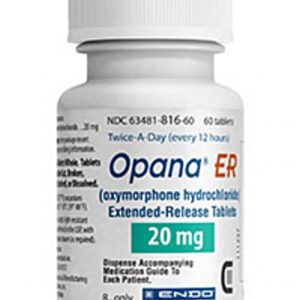GHB
$120.00 – $700.00
GHB or Gamma Hydroxybutyrate (C4H8O3) is a central nervous system (CNS) depressant that is commonly referred to as a “club drug” or “date rape” drug. GHB is abused by teens and young adults at bars, parties, clubs and “raves” (all night dance parties), and is often placed in alcoholic beverages. Euphoria, increased sex drive, and tranquility are reported positive effects of GHB abuse.
 Customer Service / Pre-sale Questions
Need Help? Contact Us via WhatsApp
Customer Service / Pre-sale Questions
Need Help? Contact Us via WhatsApp
Description
GHB or Gamma Hydroxybutyrate (C4H8O3) is a central nervous system (CNS) depressant that is commonly referred to as a “club drug” or “date rape” drug. GHB is abused by teens and young adults at bars, parties, clubs and “raves” (all night dance parties), and is often placed in alcoholic beverages. Euphoria, increased sex drive, and tranquility are reported positive effects of GHB abuse.
Negative effects may include sweating, loss of consciousness, nausea, hallucinations, amnesia, and coma, among other side effects.
GHB is also a naturally-occurring metabolite of the inhibitory neurotransmitter gamma-aminobutyric acid (GABA) found in the brain. The naturally-occurring metabolite GHB is present in much lower concentrations in the brain than those levels found when the drug is abused. As a result of fermentation, natural GHB may also be found in small but insignificant quantities in some beers and wines.
Methods of GHB Abuse
GHB is available as an odorless, colorless drug that may be combined with alcohol and given to unsuspecting victims prior to sexual assaults. It may have a soapy or salty taste. Use for sexual assault has resulted in GHB being known as a “date rape” drug. Victims become incapacitated due to the sedative effects of GHB, and they are unable to resist sexual assault. GHB may also induce amnesia in it’s victim. Common user groups include high school and college students and rave party attendees who use GHB for it’s intoxicating effects.
GHB has also been postulated to have anabolic effects due to protein synthesis, and has been used by body-builders for muscle building and reducing fat.
GHB is bought on the streets or over the Internet in liquid form or as a white powdered material for illicit use. It is taken orally and is frequently combined with alcohol. Much of the GHB found on the streets or over the Internet is produced in illegal labs. GHB may be adulterated with unknown contaminants that may worsen it’s toxicity. The production of GHB usually involves the use of lye or drain cleaner mixed with GBL, a chemical cousin of GHB and an industrial solvent often used to strip floors.
In 1990, the Food and Drug Administration (FDA) issued an advisory declaring GHB use unsafe and illegal except under FDA-approved, physician-supervised protocols. In March 2000, GHB was placed in Schedule I of the Controlled Substances Act. The sodium salt of GHB, the brand product Xyrem (sodium oxybate), is a Schedule III drug when prescribed and used legally in a patient restricted-access program. Xyrem is not available at regular retail pharmacies. If Xyrem is trafficked as a recreational drug, it’s status converts to Schedule I and it becomes an illegal drug.
Pharmacology
GHB acts at two receptor sites in the brain, the GABAB and specific GHB receptors. Action at these two receptor sites leads to the CNS depressant, stimulant and psychomotor impairment effects of GHB.
Roughly 95 percent of GHB is metabolized in the liver, and it’s half-life ranges from 30 to 60 minutes. Only five percent of the parent drug is excreted via the kidneys. Detection of GHB in the urine may be difficult after 24 hours due to it’s short half-life.
Health Hazards Due to GHB Use
Euphoria, increased sex drive, and tranquility are reported positive effects of GHB abuse. However, immediate negative effects of GHB use may include:
- sweating
- loss of consciousness
- nausea
- auditory and visual hallucinations
- headaches
- vomiting
- exhaustion
- sluggishness
- amnesia
- confusion
- clumsiness.
GHB can have an addictive potential if used repeatedly. Withdrawal effects may include insomnia, anxiety, tremors, and sweating. Withdrawal can be severe and incapacitating.
Combined use with alcohol, other sedatives or hypnotics (such as barbiturates or benzodiazepines) and other drugs that possess CNS depressant activity may result in nausea, vomiting and aspiration, and dangerous CNS and respiratory depression.
High doses of GHB, even without other illicit substances or alcohol, may result in profound sedation, seizures, coma, severe respiratory depression and death. Emergency department episodes related to the use of club drugs usually involve the use of multiple substances, such as marijuana, cocaine, and other club drugs, such as methamphetamine, Ecstasy, or Rohypnol.
Emergency room physicians may be unaware that GHB has been abused when a patient presents to the hospital. Due to the short half-life of the drug, detection in the urine may be difficult. Supportive care and keeping airways open are the primary measures used in the emergency overdose situation.
GHB Use in Pregnancy
Effects of GHB use in human pregnancy are not known. Women should not use GHB during pregnancy. Pregnant women, or those who are considering pregnancy, and who use GHB should seek the immediate advice of a health care provider.
Treatment Option for GHB Abuse
Little information is available on treatment options for persons addicted to any club drug, including GHB. Some users of GHB are not physically dependent upon it, and can be treated and informed on an outpatient basis. Chronic use may result in severe withdrawal symptoms upon detoxification, and close medical supervision and supportive care is required for these patients. Hospitalization may range from 7 to 14 days.
Withdrawal effects are reported as severe and patients may attempt to self-detoxify using benzodiazepines or alcohol. Using these additional substances may worsen withdrawal, and lead to respiratory depression, coma and death. Medications such as benzodiazepines, antihypertensive medications, and/or anticonvulsants may be needed during detoxification, but only under medical supervision.
Additional information
| Variants | Pills, Liquid, Powder |
|---|---|
| Quantity | 30 Pills, 60 Pills, 500ml, 1 L, 5 L, 2g, 4g, 6g |
Reviews (1)
1 review for GHB
Add a review Cancel reply
Related products
Dried Shrooms
Dried Shrooms
Psychotropic
Dried Shrooms
Psychedelic
Psychedelic
Dried Shrooms
Dried Shrooms




















yannickaut –
I’m glad to say I was satisfy with my package ☺️